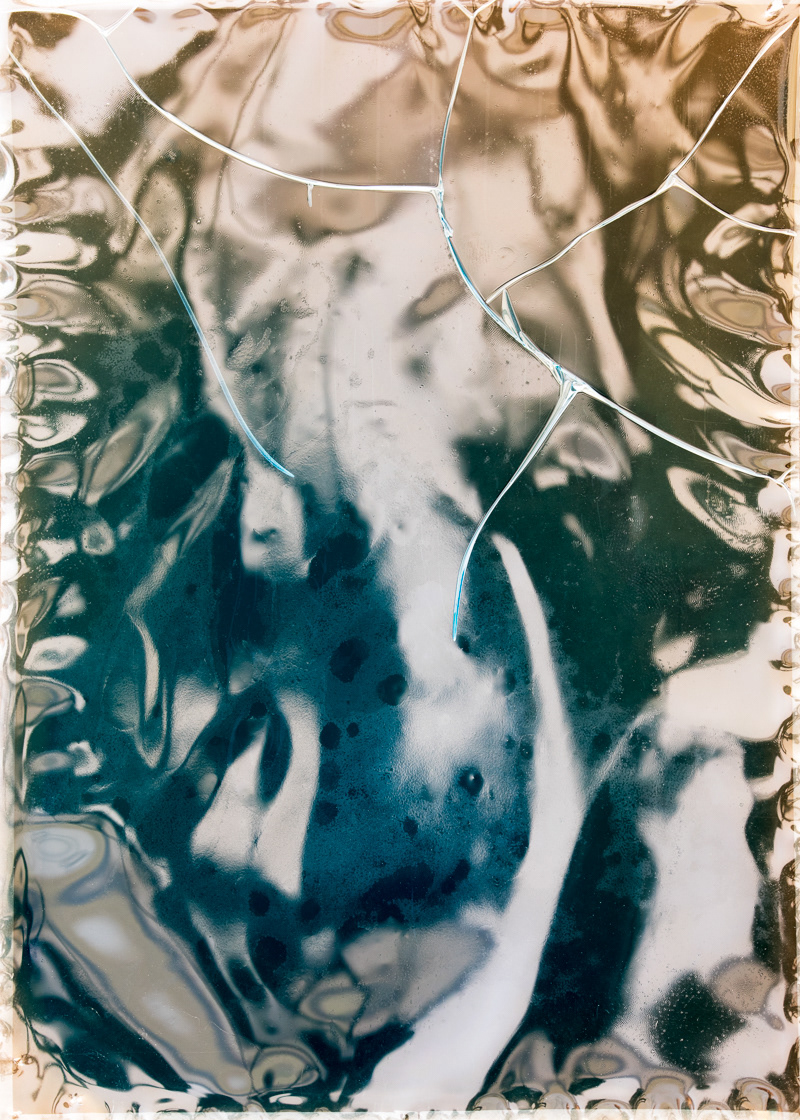
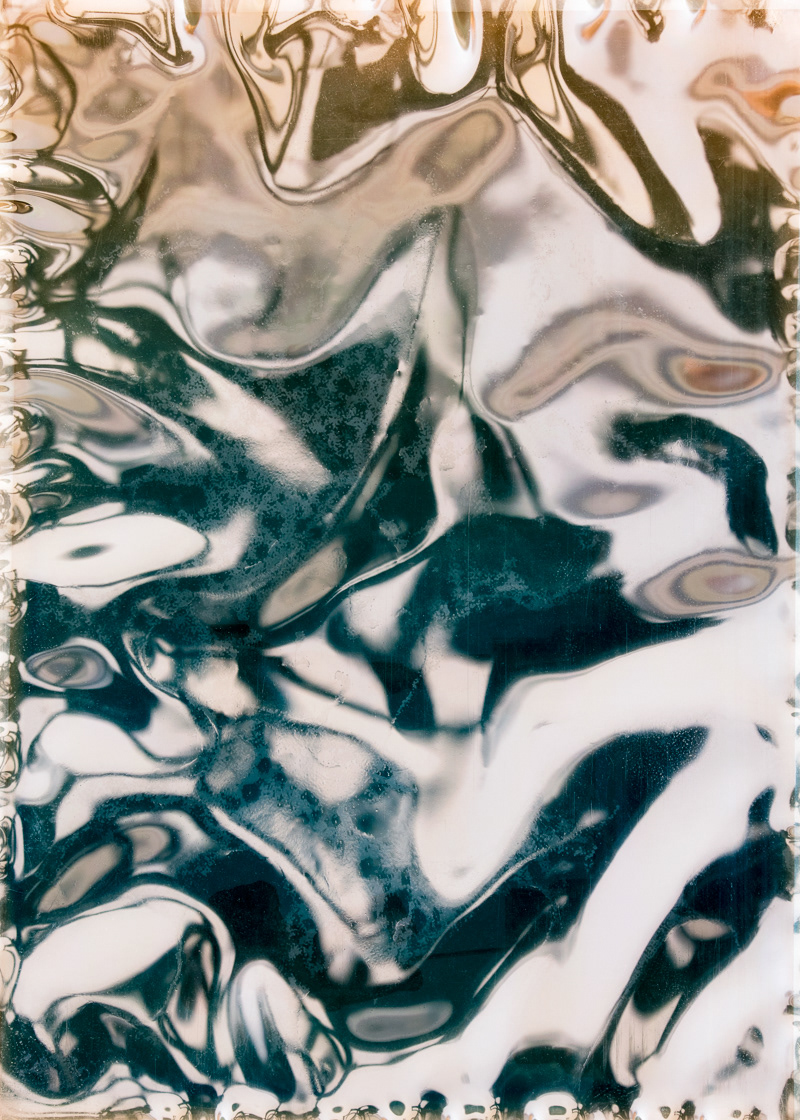
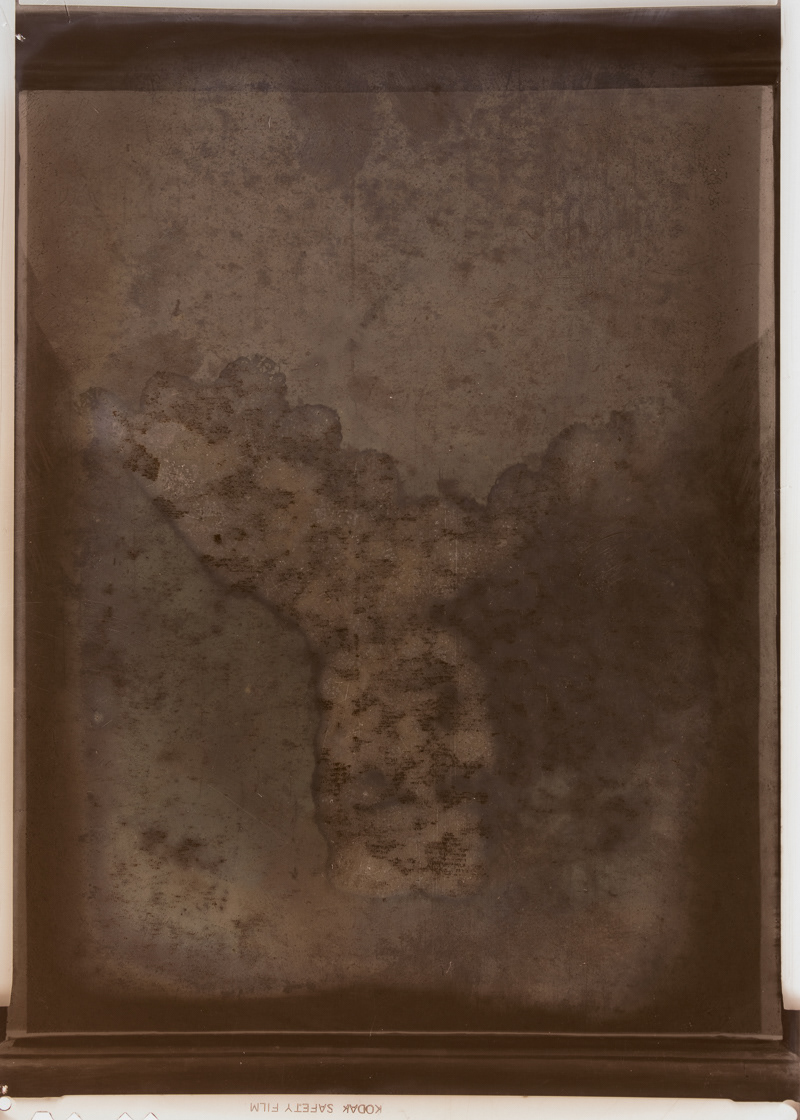
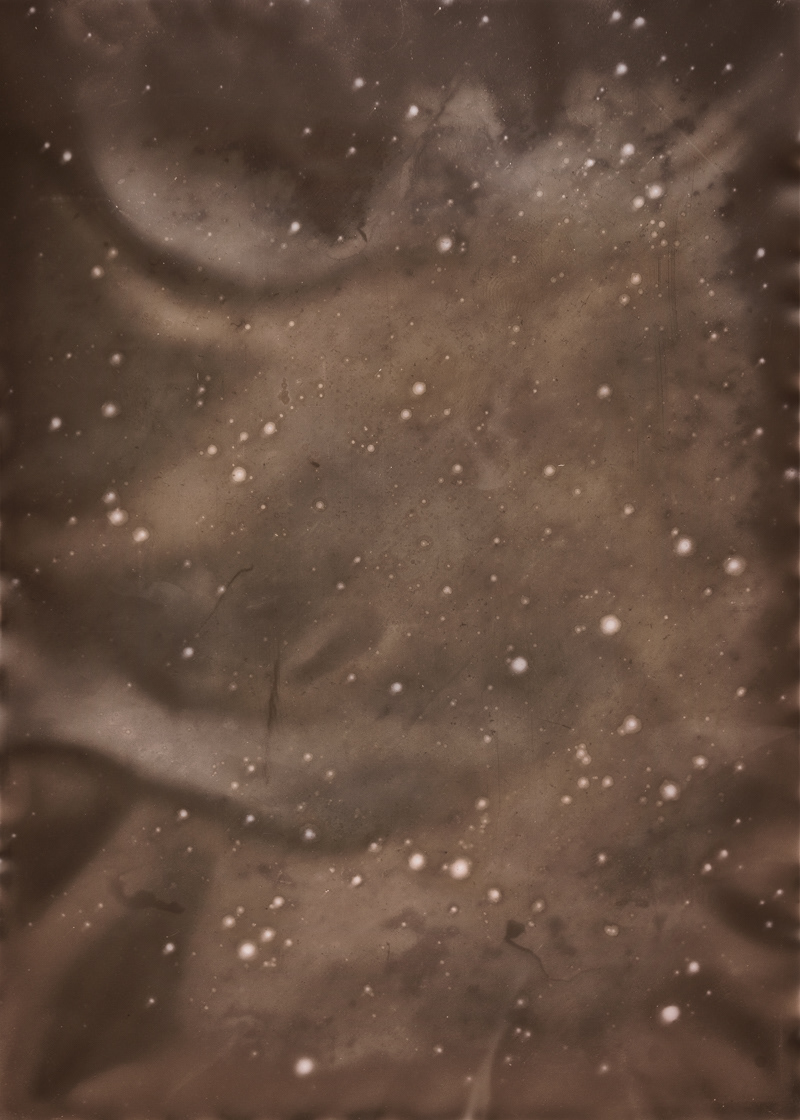
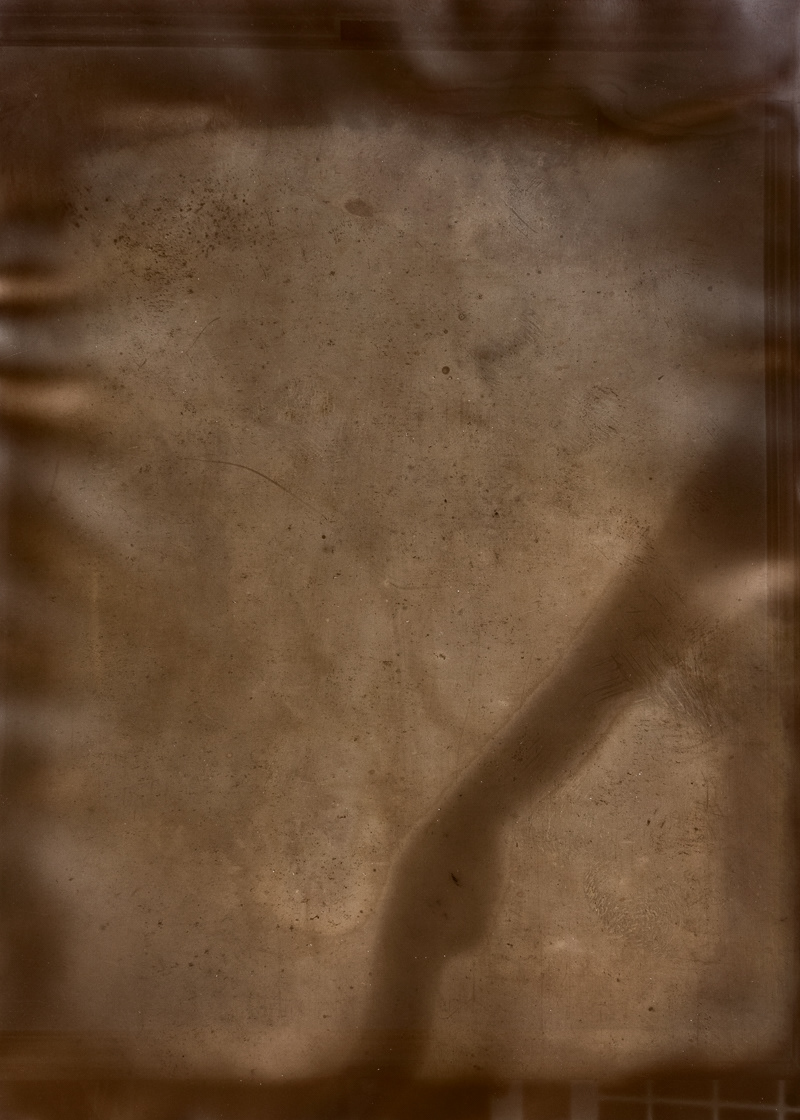
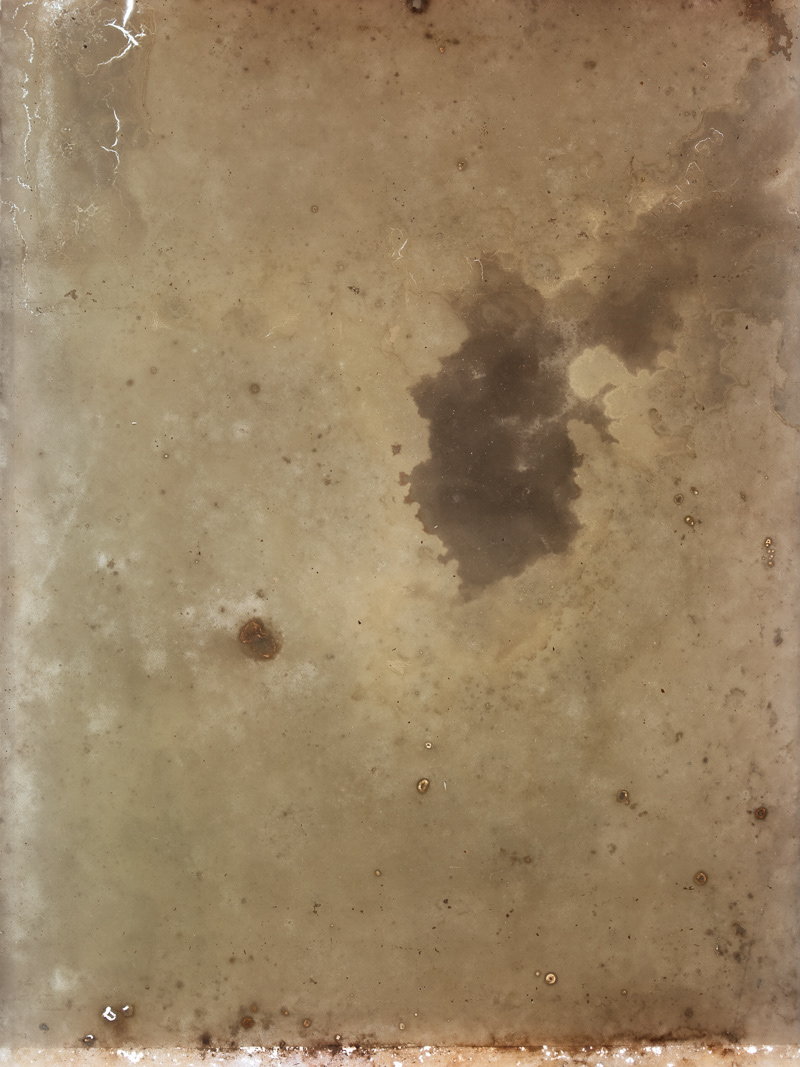
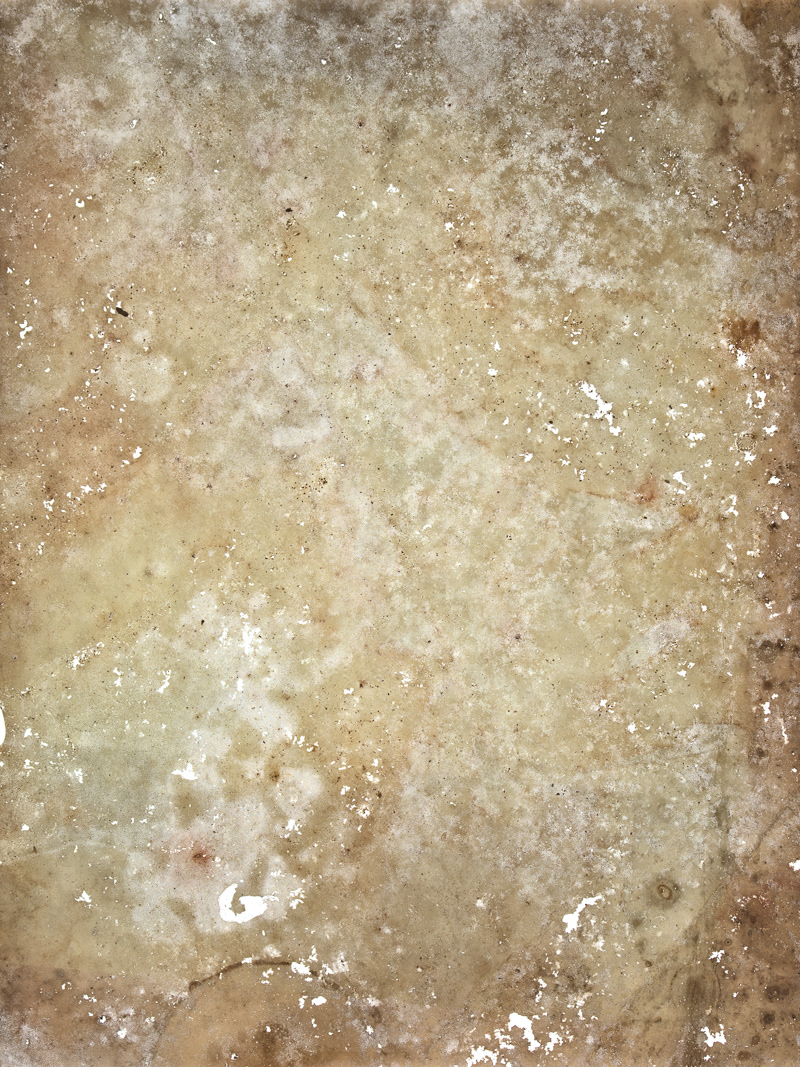
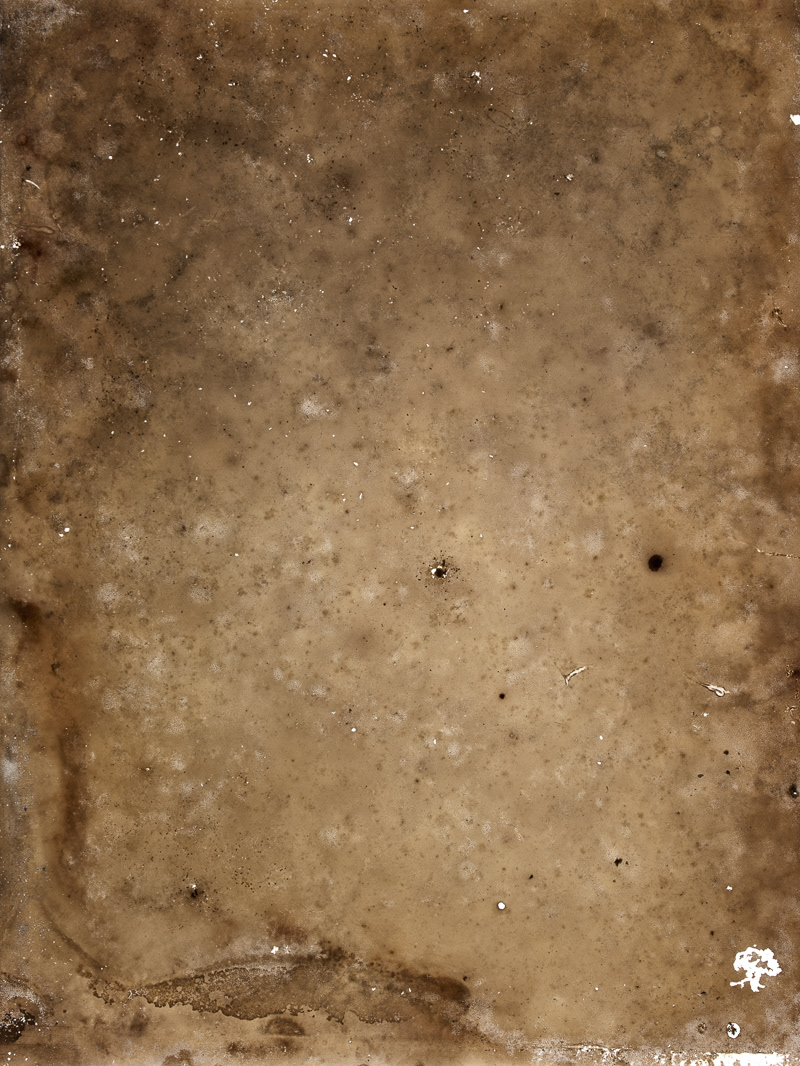
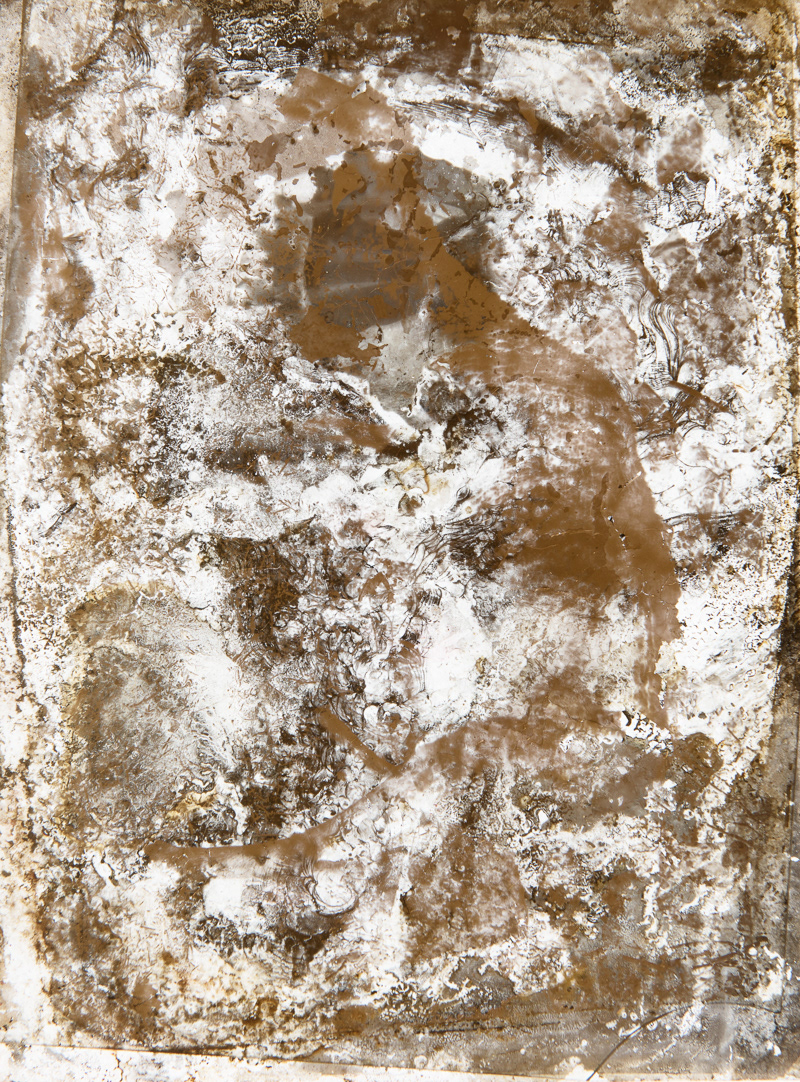
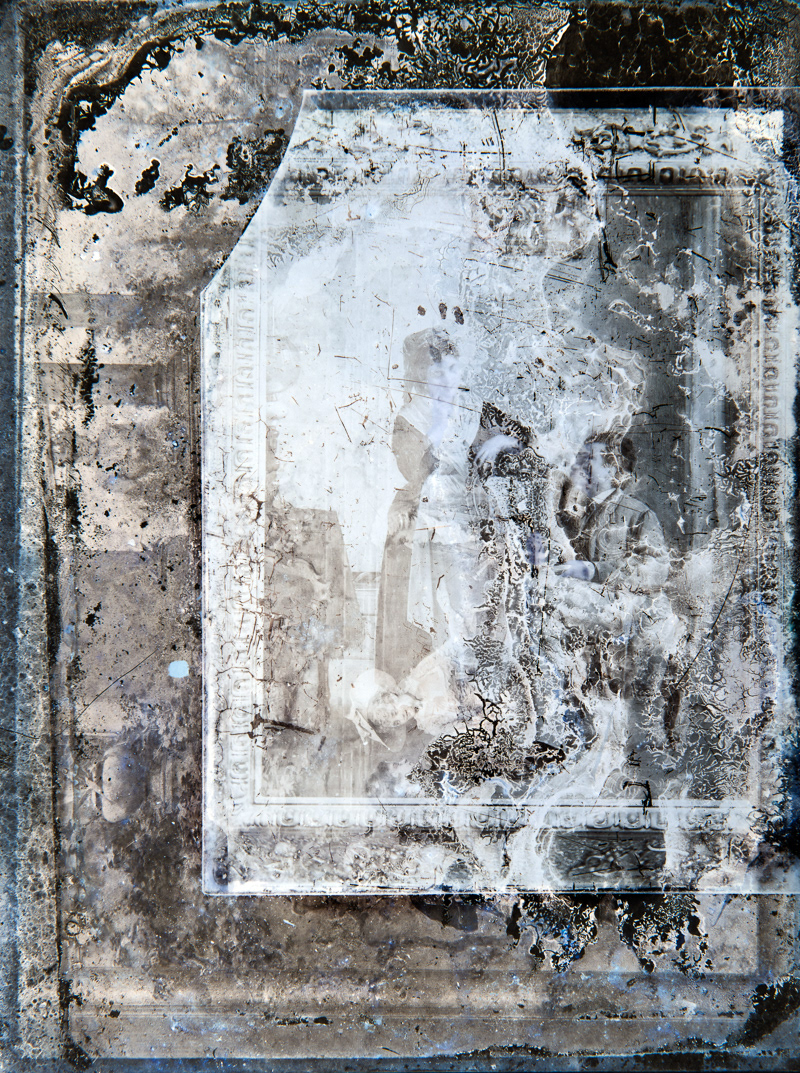
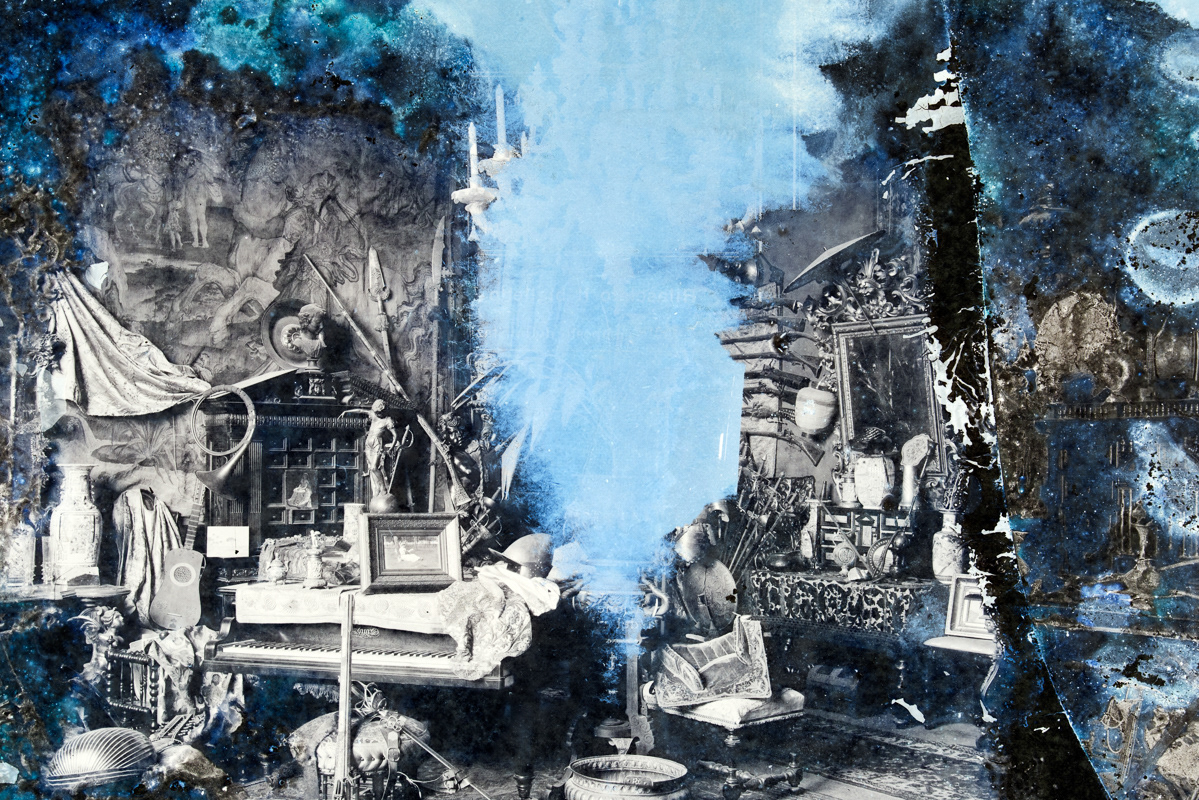
Impermanence
In this project I set out to give new life to old, decaying negatives, showing that the deterioration processes that make them useless can be also seen as an unconscious creative force, which brings unique new objects into existence.
The photographs in this series present various processes of decay that can afflict film and glass negatives, from vinegar syndrome, to silver mirroring, to flaking of the emulsion layer. While these processes damage the negative for its intended purpose – to store an image for reproduction – they also transform its material structure, creating new intriguing visual landscapes.
By considering the materiality of the negative and placing it in front of the camera, the usual photographic dynamic is overturned: the negative ceases to be a mere image support, and becomes itself the subject of the image.
These photographs are ultimately a representation of the unpredictable effects of time on matter, proof of the transient nature of photography.
The photographs in this series present various processes of decay that can afflict film and glass negatives, from vinegar syndrome, to silver mirroring, to flaking of the emulsion layer. While these processes damage the negative for its intended purpose – to store an image for reproduction – they also transform its material structure, creating new intriguing visual landscapes.
By considering the materiality of the negative and placing it in front of the camera, the usual photographic dynamic is overturned: the negative ceases to be a mere image support, and becomes itself the subject of the image.
These photographs are ultimately a representation of the unpredictable effects of time on matter, proof of the transient nature of photography.
